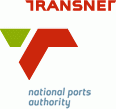Development of an operational SWAN model for Saldanha Bay:
Virtual Buoy System
Information on wave conditions at the
entrance of a port is important for the safe navigation of
vessels. However, due to shipping in this confined area,
it is difficult to monitor wave conditions right in the
entrance channel. Therefore, the concept of a 'virtual
buoy' system has been developed. The 'virtual buoy' at
a particular location is not a real wave monitoring buoy,
but represents a numerical process whereby the wave
conditions are determined at the location with a high
degree of accuracy.
The 'virtual buoy' concept has been
implemented at the entrance to the Port of Cape Town and
in Saldanha Bay.
Deep-sea waves approach Saldanha
Bay from the south-west to the north-west. Since
the south-westerly waves are reduced significantly
as a result of refraction, a considerable variation
in wave conditions can be experienced inside the bay.
The directional wave data from the
Cape Point wave buoy are sent to the Stellenbosch office
of the CSIR where the data are processed with the
operational SWAN model. The model runs on a dedicated
PC which is linked to the CSIR Integrated Port Operation
Support System (IPOSS). Once the model output is
available, the wave parameters are transferred to IPOSS
and displayed jointly with the offshore (Cape Point)
wave data, the weather and tidal information.
It is recognised that the Virtual Buoy
system will not provide data as accurate as measured data.
However, the calibration and validation exercises indicated
the present output represents the actual conditions
reasonably well.
Although a number of output locations
are available, the wave parameters of only one location
is shown on the graphs. Since the output from the system
is similar in appearance to that of the measured offshore
data, the output locations are in essence imaginary wave
buoys or 'Virtual Wave Buoys'.
|





